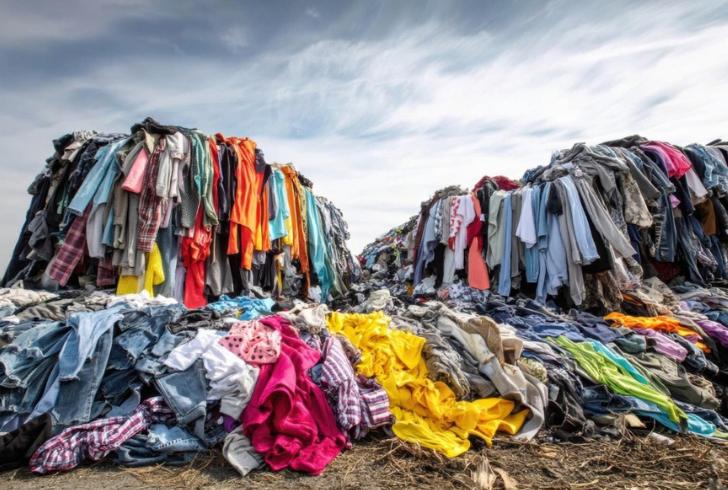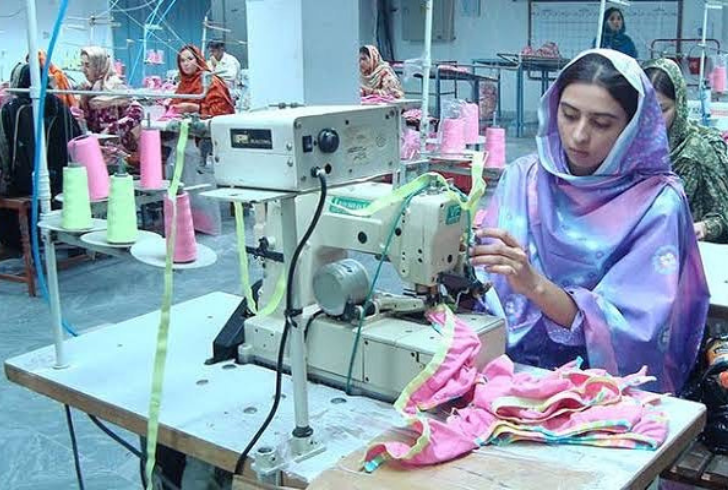The Dark Side of ‘Sustainable’ Fashion
For years, the circular economy has been framed as a solution to the environmental crisis. Built on the principle of “reduce, reuse, and recycle,” it offers an alternative to the waste-heavy “take, make, use, discard” system. The goal is to extend the life of materials and lessen the pressure on natural resources.
In fashion, this concept reaches beyond thrifting or repairing garments. It introduces new models such as clothing rental platforms, advanced fiber-to-fiber recycling, and AI-driven tools that optimize supply chains and sort fabrics for reuse.
These ideas appear to reduce waste, cut raw material use, and lighten fashion’s footprint. Yet research reveals a less optimistic reality.
When Sustainability Backfires
On paper, circular fashion looks like a climate solution. But recent evidence suggests it can unleash a “backfire rebound effect.” As recycling and efficiency measures lower costs and give clothes a greener image, consumers tend to shop more. The result is a surge in production that offsets the very gains these innovations were meant to deliver.
The rebound effect tracks this spectrum of outcomes, from “super conservation” (where efficiency genuinely reduces demand) to “backfire” (where it fuels even greater consumption). The idea isn’t new—British economist William Stanley Jevons observed in the 19th century that improvements in coal efficiency led to higher, not lower, coal use. Fashion today finds itself caught in the same paradox.
Recycled clothing marketed as eco-friendly encourages shoppers to buy additional items. When brands scale production in response, the industry’s environmental damage only grows stronger.

Freepik | Buying more recycled clothing doesn’t help the environment when it’s part of an ever-growing pile of clothes.
A Global Impact
Until recently, no one had quantified the rebound effect specifically for textiles. Yet fashion is one of the most polluting industries on Earth. The sector consumes 20% of global water, emits 1.7 billion tonnes of CO₂ annually—about 10% of total emissions—and creates 92 million tonnes of waste each year. Alarmingly, less than 1% of discarded clothing is recycled into new garments.
Production shows no signs of slowing down. Projections indicate global textile output will rise from 124 million tonnes in 2023 to 160 million tonnes by 2030. Even as recycling and reuse increase, demand could erase the benefits.
In fact, the study identified a global average rebound effect of 1.6. This means that for every 1% gain in circular textile efficiency, production of new textiles still climbs by 0.6%. Like fuel-efficient cars that encourage more driving, efficient textile systems encourage more consumption.
Why the Rebound Occurs
The rebound effect in fashion stems from how markets and consumers react to efficiency gains. Lower production costs translate into cheaper clothing. Shoppers, drawn by reduced prices and the promise of sustainability, buy more. At the same time, businesses seize opportunities to expand into new regions.
Instead of easing environmental strain, these trends push production higher. That leaves the planet worse off, despite advances in recycling or AI technology.
Guardrails for Circular Fashion
Experts emphasize that this problem doesn’t mean circular economy strategies should be abandoned. Instead, they need safeguards to limit harmful outcomes. One option is the Pigouvian tax—a levy placed on environmentally damaging behavior.

Instagram | @humanrights_centre | More than 80% of Bangladesh’s exports and millions of jobs come from its textile industry.
Researchers concluded that every 10% boost in textile efficiency risks a rebound unless checked. A modest production tax—around 1.25%—could curb the full backfire effect, while a stronger 2.5% levy would reduce the rebound to a level policymakers can manage. Beyond taxation, tools like limits on new garment output, incentives for clothing longevity, and cultural nudges toward repair and reuse could reshape the industry’s trajectory.
The Global Balancing Act
Rebound effects look different depending on geography, which makes global coordination messy but unavoidable. Take Bangladesh: textiles account for over 80% of its exports and sustain millions of households. Any abrupt clampdown on fast fashion could trigger social and economic aftershocks. Yet it is precisely the relentless appetite for inexpensive clothes in richer countries that fuels this dependence.
So, climate policy here becomes a balancing act. Any framework must protect jobs and fragile economies while steering production onto a sustainable path.
Growth vs. the Planet’s Limits
At its core, the fashion problem is entangled with the growth dilemma. Degrowth theorists argue that sustainability is impossible if economies rely on perpetual consumption. Whether or not you agree, the debate forces us to ask: can fashion ever be truly sustainable without changing our definition of growth?
Cultural shifts matter, too. Buying less but better, repairing clothes, or embracing minimalism can change habits from the ground up. Public campaigns paired with the right incentives can turn these ideas from niche values into mainstream practice.
Examples of Progress
Some governments are already pushing ahead. France now refunds part of clothing repair costs through a national repair fund, encouraging consumers to mend instead of discard. Across the UK, EU, and Australia, the Waste and Resources Action Programme works with both businesses and governments to tackle textile waste.
Meanwhile, global initiatives like the Better Cotton Initiative, Cascale, and the Fashion Pact aim to weave sustainability into supply chains. They’re promising starts, though their impact will only count if scaled dramatically.
Moving Toward Real Sustainability
This study—the first of its kind to measure textile rebound effects globally—underscores a sobering truth: efficiency gains by themselves won’t cut fashion’s footprint. Without regulation and real consumer change, those same “solutions” may worsen the problem.
The road to sustainable fashion demands proof, not just promises. Industry leaders will need to back their circular economy pledges with data and accountability if they want good intentions to translate into genuine progress.